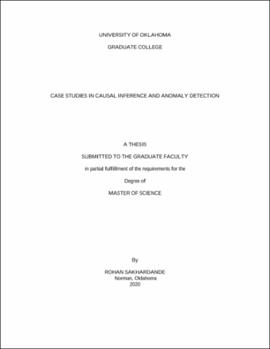| dc.description.abstract | The study of parent-child well interactions in unconventional shales has generated high interest both in the industry and academia over the last decade. This is largely because of the growing number of child wells and their immediate impact on the parent well production owing to several dynamic factors, one of them, including well spacing. Evaluating the impact of well spacing on parent and child well production performance is challenging. Several studies have resorted to geomechanical stress and fracture modeling combined with dynamic simulation techniques while a few operators have chosen field trials to evaluate optimal well spacing. Several data-driven approaches to address the well-spacing problem have also become popular. One such commonly used data-driven approach simply calculates the difference in cumulative production over a specified period of time for parent and child wells grouped by spacing. This approach has been the method of choice for several different recent analyses of well spacing; however, given that the method of simple averages does not account for formation properties or completion design, the results may be compromised and can lead to counterintuitive results.
In this thesis, I introduce a new data-driven approach leveraging the power of causal inference as seen in clinical trials for multivariate observational studies. The causal approach addresses the problem behind the routinely used simple averages approach by providing a formalism to control for reservoir and completion variables when evaluating the impact of well spacing on production performance. I apply the causal inference workflow to a dataset from a prolific oil basin in Texas with over 700 wells in the analyses. It includes the formation properties, fluid volume, proppant weight, landing zones and the downhole locations of the wells. Using the causal inference workflow, I evaluate the effect of well spacing on well performance at different parent-child spacing ranges. The optimal well spacing is then estimated for this shale play based on the magnitude of the causal effects. These estimates are then compared with the simple averages approach to demonstrate the power and utility of causality.
In the second part of the thesis, I transition into a discussion on anomaly detection approaches applied in the oil and gas industry. I discuss current anomaly detection methods for a widely used artificial lift method – the Sucker Rod Pump (SRP). Today, there is a growing need for fast and accurate anomaly detection systems given the emergence of Internet of Things (IoT) and access to Big Data. Anomaly detection using human operators can be expensive, is often subject to bias and experience-levels and does not scale very well with the need to monitor more than a few tens of wells. With SRPs, the problem of anomaly detection becomes a problem of image classification where dynamometer cards are evaluated for signatures of failure. While this has been the mainstay of anomaly detection for pumpjacks, in this thesis, I automate this task of monitoring and detecting the anomalies from the SRP pump cards.
Several thousand synthetic pump cards specific to pump failures modes are generated from the literature and fed to a deep learning model. This deep learning model is a Convolutional Neural Network (CNN) which is commonly used in image classification tasks, speech recognition tasks as well as many other modern-day technology applications including smart phones, self-driving cars, aerospace etc. The CNN used in this work offers a very high accuracy for detecting a variety of pump failures modes thereby offering the potential to save costs, time and unnecessary workovers for the operator. | en_US |
